The Saatva Classic is our top-rated mattress for all sleeping styles and routines. But how sustainable is it? With more and more shoppers considering the environment when choosing their next investment, taking a closer look at at the Saatva Classic is essential to understand its impact on the environment.
All of the brands featured in this year's best mattress guide for all sleepers are Certi-PUR US certified, which proves they are made from non-toxic foam and materials. However, our best mattress overall, the Saatva Classic, is not 100% organic. It does include what the brand calls ‘organic components’, but what does that actually mean? And what else is it made from?
With the Black Friday mattress deals landing, all of our top-rated mattresses brands are offering huge discounts. And Saatva is no different, with a generous $400 off when you spend over $1,000. So, we're taking a deeper look at its best selling mattress and revealing whether the Saatva Classic is eco friendly, so you can feel confident in your decision to invest in one of the best mattresses available.
Is the Saatva Classic Mattress organic?
The short answer is no, Saatva mattresses aren't 100% organic. But, as mentioned above, this really depends upon whether you’re looking for one of the best organic mattress that use 100% natural, organic materials.
While 'organic' and 'eco-friendly' both largely mean a positive impact on the planet, there is a distinct difference between organic and eco-friendly practices. Organic beds are made from all natural materials like latex, cotton or wool that is responsibly sourced. Look our for certifications like GOLS and GOTS.
The Saatva Classis is not 100% organic. If you do want an organic mattress from Saatva, opt for the Saatva Latex Hybrid — crafted from GOLS-certified organic natural latex, GOTS-certified organic New Zealand wool and recycled steel coils.

However, the Saatva Classic is made up of a naturally breathable and cooling organic cotton top cover, eco-friendly foams which are Certi-PUR certified to meet strict standards of health, safety and environmental impact, recycled steel coils that contour to your body to relieve pressure points no matter your sleeping position, and a flame barrier made from natural plant-based thistle pulp instead of fiber glass and toxic chemical sprays.
The mattress is GreenGuard Gold certified to help reduce indoor pollution as well as the risk of exposure to harmful substances like the volatile organic compounds (VOCs). It is also hypoallergenic thanks to the Guardin Botanical anti-microbial treatment it has gone through to protect it from the growth of mold, bacteria and mildew.
So, while it's not 100% organic, the materials are responsibly sourced, prioritizing high-quality and environmentally friendly options.
Is the Saatva Classic eco-friendly?
Mattresses that are eco-friendly are made by brands that incorporate sustainable practices into their production process. And this is true for Saatva. The brand has 19 factories in the United States where mattresses are “made to order.” This means less waste, and less travel, reducing transportation emissions.
Moreover, the brand has partnered with a solar-powered factory (The Bedding Industries of America) with panels amounting to a total of 300KW which is enough to power the entire plant and produce a surplus to add back to the electrical grid.
Saatva has also partnered up with Evertreen, a sustainable forestry firm which enables companies to reduce their carbon-footprint by planting over 16,000 trees, offsetting more than 675,000 kilograms of carbon dioxide.
Taking this into consideration, as well as the materials used, we'd say the Saatva Classic is a great choice for those concerned about their impact on the environment.
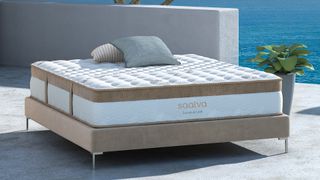
How to reduce your carbon footprint when buying a new mattresses
The best way to reduce your carbon footprint when buying a new mattress is to ensure you invest in one that lasts. This will reduce frequent replacements, thereby diminishing the environmental impact. Let’s look at some of the other ways you can achieve this:
1. Look for genuine mattress certifications
Mattress certifications aim to provide clarity to the consumer about how a mattress has been made and what it's been made from.
It is always a good idea to know what organic certifications you should look for when shopping for your next bed, as it is easy to get confused amid all the jargon. Watch out for these basics:
- GOTS (Global Organic Textile Standard): Certifies the processing, manufacturing, packaging, trading and distribution of mattresses made from at least 70% certified organic natural fibers
- GOLS (Global Organic Latex Standard): Certifies latex mattresses with at least 95% organic latex
- Certi-PUR: certified to meet strict standards of health, safety and environmental impact
- GreenGuard Gold: restricts emissions of volatile organic compounds (VOCs) from mattresses
- OEKO-standard 100: certifies that mattresses do not contain any harmful chemicals and are safe for all
2. Choose a mattress made from sustainable materials
Natural materials are generally the most sustainable options. This is because the process of making them doesn't emit harmful and polluting gases, like some chemically-made foams. They also don't rely on finite resources to make them.
Plant-based substances like latex, cotton or wool will help ensure your mattress is eco-friendly. A good example would be the Avocado Green which is made from GOLS certified organic latex and GOTS certified cotton and wool. You can find out more about this mattress in our Avocado Green mattress review, in which we awarded it an impressive 4.5/5 starts.
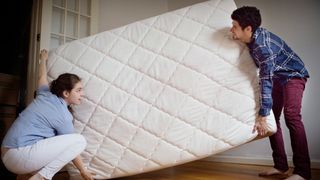
3. Opt for a mattress that is produced locally
Opting for locally crafted and produced mattresses will help reduce your carbon footprint. This is because the less travel involved in the production process, the less pollution.
Saatva mattresses, for instance, ensure its mattresses travel less than 100 miles when being delivered to your door, reducing transportation emissions.
4. Look for mattress removal services
Knowing how to responsibly get rid of your old mattress can be difficult. Ideally, you will be able to recycle your mattress. But not all mattresses can be recycled. Many brands have a system in place to reuse your old mattress or to dispose of it responsibly.
For example, Saatva's free white glove delivery includes mattress removal. Not only will they install your new mattress, but they'll take your old bed (including the foundation) for free.
Should I buy the Saatva Classic mattress this Black Friday? The verdict
So, are Saatva beds worth it? After taking a closer look at the materials Saatva use as well as its production process, I think it's a sustainable, eco-friendly option that's great value for money. Not only do Saatva make its beds with the environment in mind, but the high quality build and craft means the mattresses are made to last.
On top of this, the lifetime warranty means repairs will be covered if anything goes wrong, so I won't need to seek a replacement mattress, reducing my carbon footprint.
Considering the mix of natural fabrics and recycled materials while adopting sustainable production practices, I’m convinced that getting the Saatva Classic in the Black Friday sale is well worth it for minimal environmental impact.
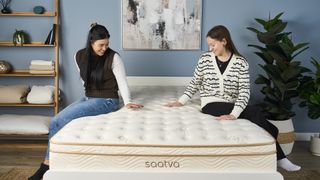





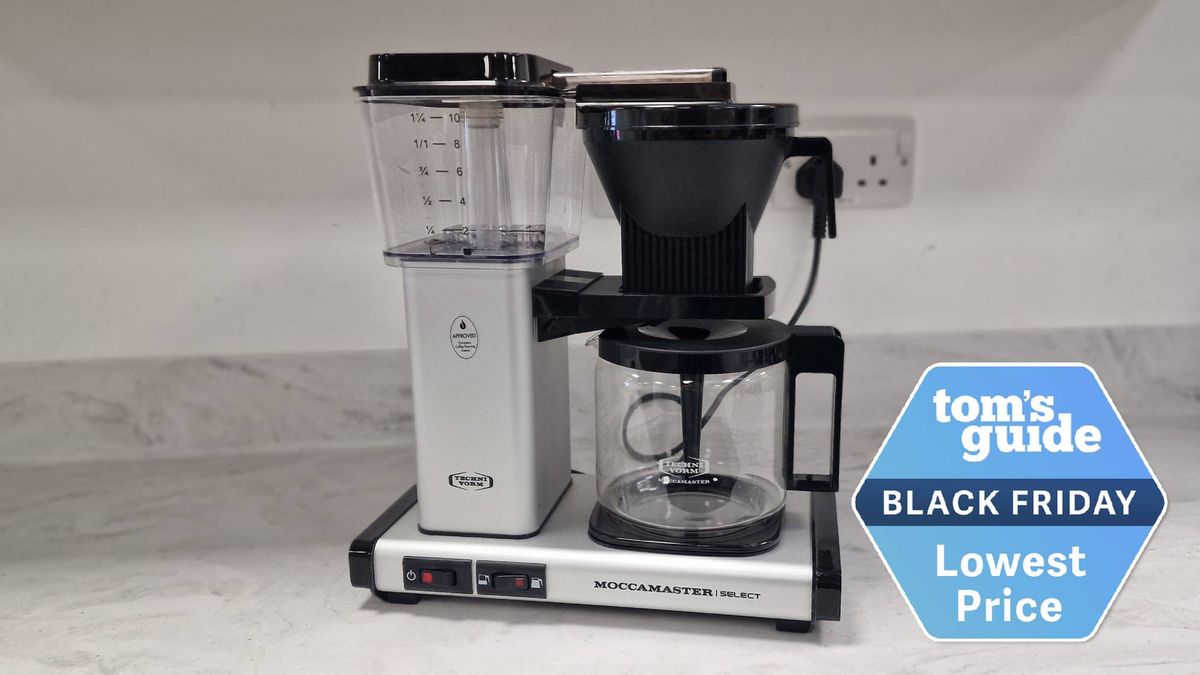

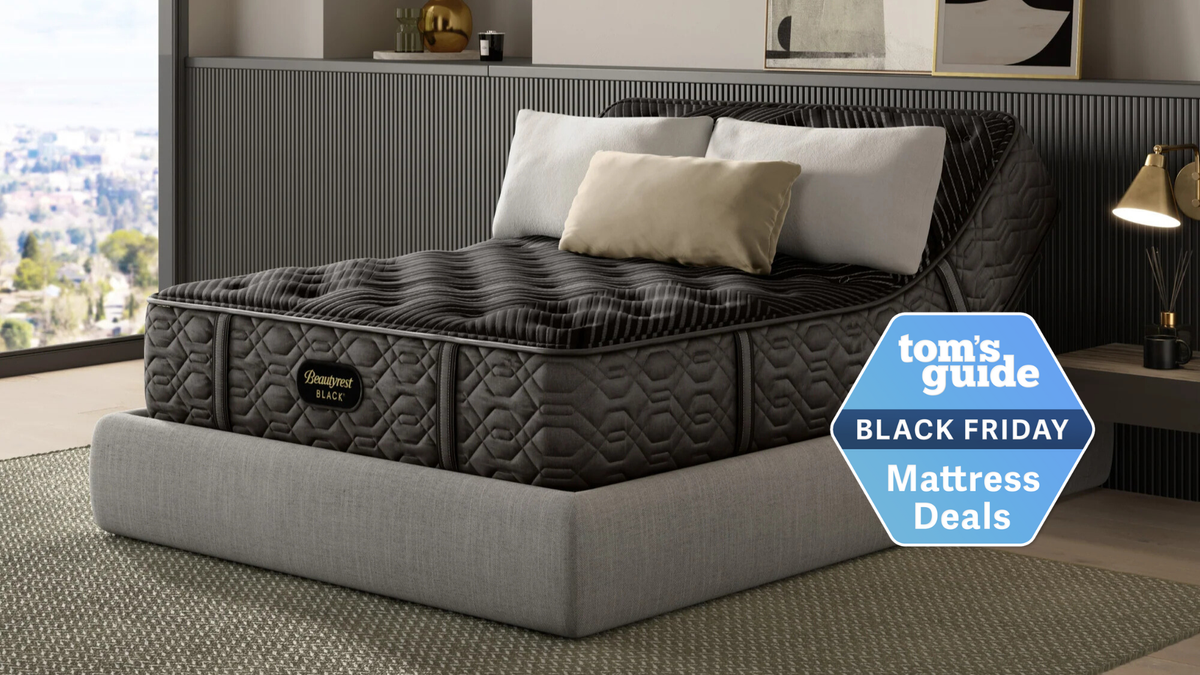











 English (US) ·
English (US) ·